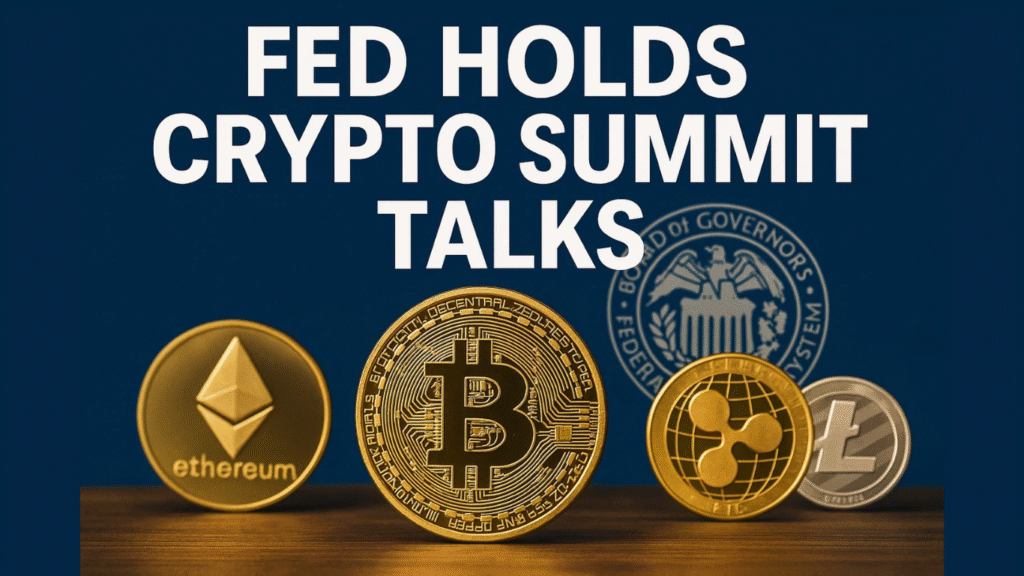The U.S. Federal Reserve will convene its Payments Innovation Conference on Tuesday, October 21, bringing together top voices from both crypto and traditional finance. The high-profile event is expected to shape future policies on Bitcoin, stablecoins, and tokenized payments, as regulators and market leaders align on how digital assets fit into the U.S. financial system.
The meeting, first announced on September 3, aims to address how emerging technologies are reshaping global payments. Governor Christopher J. Waller, who will both open and close the session, said the goal is to “enhance safety and efficiency” in payments while adapting to evolving consumer and business needs.
Key agenda items include:
- Bridging traditional finance with blockchain-based systems.
- Exploring stablecoin issuance models and tokenized assets.
- Evaluating AI’s role in improving settlement speed and fraud detection.
Executives from BlackRock, BNY Mellon, Franklin Templeton, Fireblocks, and Chainlink are expected to share insights, marking the Fed’s most direct engagement with crypto firms to date. For many, the event signals a turning point in how the central bank views digital assets—not as speculative instruments, but as integral components of future financial infrastructure.
Policy Reforms Set Stage for Fed’s New Approach
The Fed’s open dialogue with crypto innovators follows sweeping reforms introduced under the Trump administration, which reversed years of regulatory caution toward digital finance. Earlier restrictions that discouraged banks from servicing crypto firms have been relaxed, and the Fed officially ended its supervisory program targeting digital-asset institutions.
Additionally, the GENIUS Act, passed in July, established a clearer framework for blockchain innovation, signaling bipartisan support for Web3 development. Analysts say this shift has provided the regulatory stability needed for the Fed to host a conference explicitly focused on crypto and payments technology.
These developments suggest a broader policy evolution—from oversight and risk aversion toward active collaboration between Washington and Silicon Valley’s digital finance sector.
Monetary Outlook: Rate Cuts and Market Impact
The timing of the conference also carries macroeconomic weight. The Federal Open Market Committee (FOMC) will meet again on October 28–29, with markets expecting a 25-basis-point rate cut, bringing the federal funds rate closer to 4%. Last month’s initial cut was driven by slowing job growth and weaker demand, sparking optimism that easier liquidity could fuel risk assets, including crypto.
Governor Waller noted that while inflation pressures are easing, lingering tariff effects from Trump-era trade policies complicate the Fed’s decision-making. Nonetheless, a dovish policy stance could boost liquidity, weaken the dollar, and reignite crypto momentum, especially as institutional participation expands through regulated frameworks.


